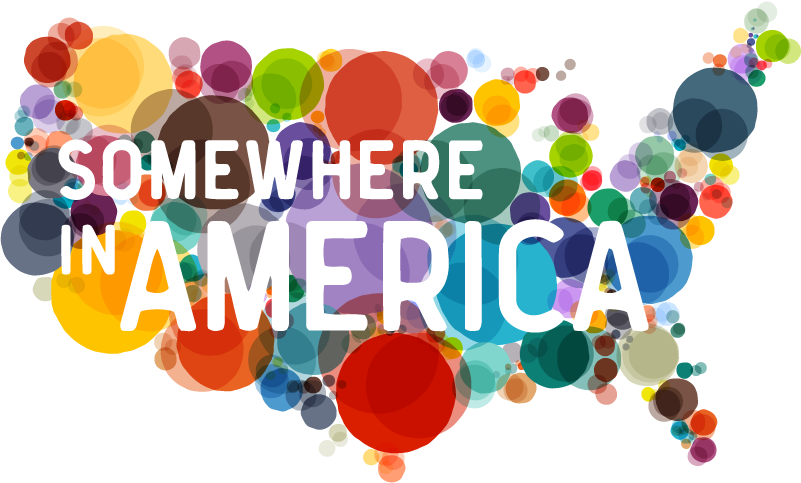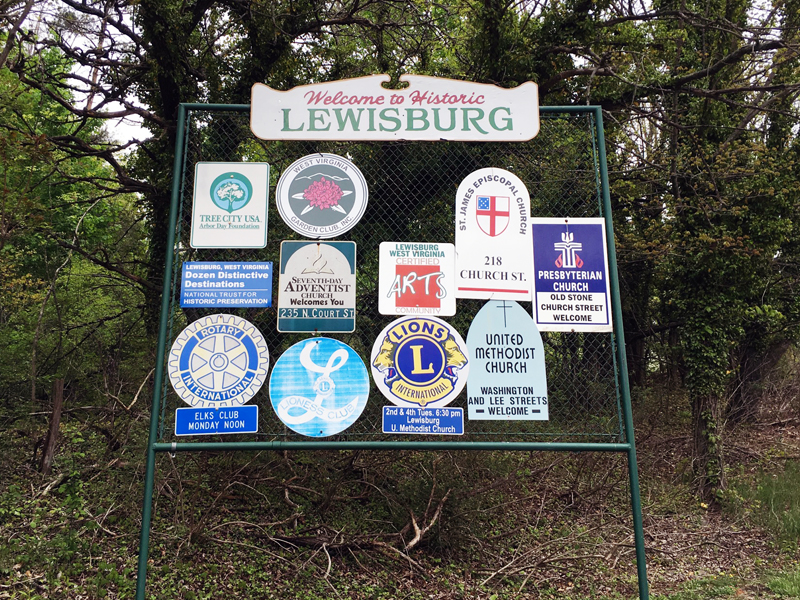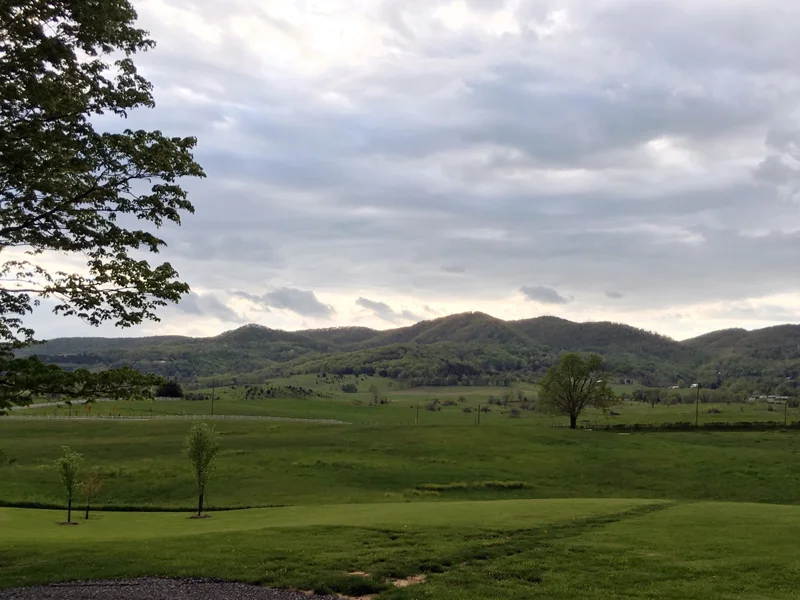Brian: Effigy Mounds National Monument
August 25-28, 2016
The Fields of Taliesin, Spring Green, WI
Traveling with Nancy
This is my take on the journey, a one-sided view.
I didn’t know Nancy before we embarked on this trip. We met once in person beforehand. From our conversations, I knew everything would be fine. She is open, warm, interested in everything, funny, and disarms everybody she meets. She thinks about others all the time and gives the best to them. Along the way, we talked to so many different folks because of her curiosity and willingness to engage anybody in conversation. It would have been a very different trip on my own.
Why I Wanted to Take this Trip
Before I learned of Nancy’s project, I had planned a visit to my birthplace, North Fond du Lac, Wisconsin. My family moved to Oklahoma when I was nine. I have never been back. What might have been if I had never left loomed large in my imagination. I was researching other places in Wisconsin to include on the trip when I discovered Effigy Mounds National Park.
I’ve known about Native mounds for a long time. I don’t know how or when I learned of them but I’ve made several trips to see some of the famous sites: Cahokia, Chillicothe, Great Serpent Mound, Spiro Mounds. They are ancient and mysterious. The people who built them lived a very different way of life, attuned to the land, animals, the seasons, each other, the cosmos. I knew this would be a great candidate for Nancy’s project.
The motivation behind my original trip was to learn what Wisconsin imparted to me. How did being born there shape my personality, my identity? Because I had never been back, was it a mythological place that enticed me but didn’t exist?
As for the significance of the mounds, I was looking for something transcendental, more meaningful than my boring daily existence. I wanted a spiritual event, like being born again in jail. I wanted in on secret knowledge. Maybe getting close to the artifacts left behind would transmit something transformative to me.
That said, I think motivations are tricky. Beforehand, they are vague impressions. Afterwards, they change by what your experience. Writing after the trip, I may only be understanding them now. Theses feeling may not have been there in the beginning.
While I had plans for a different trip, I didn’t want to subject Nancy to a nostalgic return to my childhood home. I wanted to focus on the mounds. They interested both of us. It was an added benefit that she would be able to reunite with an old friend in Madison. I’m so glad she chose this journey.
The Itinerary
The broad itinerary of our trip, as we originally planned it:
Day 1 (Thursday): Fly into Madison and meet with Jerl Richmond, Nancy’s old mentor and friend, separated 23 years ago. Drive to McGregor, Iowa, where we were staying for the next 2 days.
Day 2 (Friday): Visit Effigy Mounds National Park; Take the guided tour; Explore the park and area on our own.
Day 3 (Saturday): Explore weird and interesting things while slowly making our way back to Madison, for a very early flight home Sunday morning.
What Was the Trip Like?
We had an early morning flight with seats apart from each other. For the most of the 2+ hours, I read and didn’t think about the trip. It wasn’t until we began our descent that I started to get excited. I watched as we approached Madison. I was amazed by the amount of water: ponds, streams, lakes. I didn’t know it was like that.
In Madison, we got our car and drove to the university to meet Jerl, Nancy’s friend and former boss. I felt strange standing under the Wisconsin sky, like it was familiar and part mine.
Jerl was warm, generous, quick to laugh, and made us feel completely at ease. We ate lunch at an Afghan restaurant while he and Nancy caught up. We got to talking about the mounds and our purpose. He told us of Man Mound in Baraboo, and of his friend Rob Nurre, caretaker of Man Mound and an expert on mounds in general. We hoped to meet him on our way back.
When I mentioned I was from North Fond du Lac, Jerl made a comment, “Oh, the holy land.” I didn’t know what he meant but it stuck in my mind. When I got back home, I looked it up: “The Holyland is an American region located mainly in northeastern Fond du Lac County...and southern Calumet County...The area is known for its distinctive agricultural landscape, a close-knit community life, and deep Roman Catholicism brought by Germans who began settling the region in the 1840s...It has been called ‘The Holyland’ since at least 1898.”
After reading this I wondered if the “distinctive agricultural landscape” of the Holyland was something in my aesthetic. Surely, the land where I was born and spent nine years informed what was naturally beautiful to me?
Later, when we left Madison for McGregor, Iowa, we travelled Routes 14 and 60, scenic roads that follow the Wisconsin River to the Mississippi. The longer we were on the road, the more “at home” I felt. The rolling hills, the river peeking through the trees in the bottom land, the small towns and corn fields, all felt so right. Even the color and texture of the dirt, deep black along the river, yellow and brown on the hillsides, were so different than the harsh red soil of Oklahoma. It was soft, fertile, inviting. I felt love for the landscape.
Around Spring Green, we saw a large historical marker. We stopped to read it. It commemorates Frank Lloyd Wright and his house and school, Taliesin, just 6 miles down Route 23. We decided we would visit it on Saturday, on the way back to Madison.
When we crossed the Mississippi at Prairie du Chien, we could see the high bluffs on either side of the river. It is a dramatic environment, the river fragmenting into many smaller channels, mist and fog swirling around the bridge. My excitement was growing as I anticipated seeing the mounds the next morning.
As I said before, I have seen other monumental mounds. Great Serpent is a wonder. When I went to Spiro Mounds, there was a mountain by itself, surrounded by flat floodplain. At the time I felt certain that mountain played a major part in why the mounds were built there. The landscape was integral to their placement. I knew the next day we would be seeing the largest concentration of effigy mounds in the country and I felt an expectation of grandness.
Sandy and John’s Airbnb
We finally arrived in McGregor, Iowa, an old Victorian town. It felt like every small town in my life, pleasant and sad. At our Airbnb, Sandy, our host, came to visit us. Nancy and I were quite hungry and asked about a place to eat. She informed us that everything closed at 8 pm, except for the gas station, which had some basic groceries and Josie’s River Queen, where we could get a bar pizza. We drove quickly into town but it was too late. Everything had just closed. We had fun trying to get food at a couple of different places but eventually went to Josie’s. We ordered a pizza and some beer.
Soon, we were in conversation with Kathy, the bartender. We learned about Josie and Bob, the owners of the River Queen; the old hotel that was destroyed by a group of greedy developers; the former superintendent of Effigy Mounds, Thomas Munson, who stole the remains of 41 people from the park and stored them in his garage for 20 years; and the bad economy.
I’ve lived in many small, dying towns, filled with people who have lived there all their lives. Usually the people are older, the kids leaving to find jobs in bigger cities. I have such mixed feelings about these places. The folks are generally open and inviting but the atmosphere of the place, the hopelessness, makes me want to flee. I felt that about McGregor, Prairie du Chien, and Marquette. It could be a projection.
When we got back to the house, it didn't take long before we both fell asleep.
The next morning we were up early and went to the park, which was just a few miles down the road. On the north side of Marquette, we were stuck in traffic for some reason. In one of Nancy’s fearless displays, she jumped out of the car and ran up the road to talk to the person handling the traffic. What they must have thought to see her do that! I admired her impulsiveness.
At the park, we signed up for the tour. Our guide, Michael Douglass, was personable and energetic. Right outside the office, we crossed a bridge over a dry creek and saw the first of the mounds, 3 small hills. They didn’t look like much. I wondered how they knew these were mounds and not just outcroppings.
The trail ascended a large hill. Halfway up, we stopped at a limestone rock that vented cool air from the underground. Michael talked about the mountain breathing. I had an image for a story of a family walking up the trail, the young boy lagging behind making up tales of the creatures under the rocks.
After a long walk to the top, we saw the first of the effigy mounds. Frankly, I felt disappointed. Maybe it didn’t help that when we saw the first bear mound, Nancy compared it to a Chia Pet. She was absolutely right though.
Park Ranger Michael Douglass, Nancy and I at Fire Point
Most images of the mounds are shown from the air, outlined in white chalk in the winter, through leafless trees, or black and white drawings made by surveyor/explorers. When you are standing next to them, you can’t see the whole thing. You know it is a bear because of the sign and the images you have seen. But it really looks like a slight rise covered in tall weeds. If the park didn’t mow the grass around them, you wouldn’t be able to distinguish them from the rest of the hilly ground. I tried to hold on to a sense of awe, but it was fading.
We continued past different mound groups and ended at Fire Point, a scenic overlook on the high bluffs overlooking the Mississippi.
I began to understand something standing at Fire Point, and later, at Pikes Peak. As at Spiro, the site where the mounds are built has as much significance as the mounds themselves. Here I was expecting the mounds to be grand. They are not. They are like worn tombstones, time and weather sanding them down to nubs.
Fire Point overlooking the Mississippi
We then went to see the second set of mounds in the south part of the park. They are known as the Marching Bear Mound Group (see the line drawing above). Individually, they are not that impressive. Yet when you see the line of marching bears ascend the hill, culminating in a pair of birds about to launch themselves over the river, it’s the collection within its place that is meaningful.
This was to be reinforced yet again when we went to Pikes Peak State Park and stood on the overlook, high above the valley. Vast forces were at work here. Time was different. The bluffs surrounding the river defied the glaciers during the last Ice Age, forcing the miles-thick ice to flow around them. Yet, the river flowing endlessly, softly, carved its way through them. My spirit soared over the water like the birds. The old people must have felt the same way. We stayed here for a long time. I didn’t want to leave or talk. I wanted to fly. I wanted to take the essence of this place and put it inside me.
Pikes Peak State Park overlooking the Mississippi
It was hard to leave Pikes Peak but fatigue and hunger set in. We had coffee and dinner at Prairie du Chien, stopped at the Casino in Marquette, then finally wound up back at Josie’s.
This time we met Josie and Bob, Dennis, and John, Sandy’s husband. After a while, John invited us to join him and Sandy at the other bar in town, the Pocket City Pub. We spent the evening getting to know them and their friends: Dan (he and John travel together on their motorcycles), Ponderosa (a farmer in the area and “god’s gift to women”), Mel (the bartender), and a couple of other folks whose names I forgot. All very kind and welcoming, the Midwestern openness. I definitely inherited this same politeness.
John, Sandy, Nancy and I at Pocket City Pub
The next day we left McGregor and travelled on the south side of the Wisconsin River to Spring Green. After endless miles of cornfields, we arrived at Taliesin, Frank Lloyd Wright’s home and school. We were both tired. It had been an intense trip so far. We decided to go on 2 tours, one of the school and one of the home. At the outset of the tour, we both liked his architecture. After 3 hours of Frank Lloyd Wright, we both began to despise him as a person. What an ego! But the setting of Taliesin, my god, it is so beautiful. He knew how to build a place in tune with the land.
We arrived back in Madison in the late afternoon and departed very early the next morning. After lunch and coffee in Manhattan, we took leave of each other and arrived back home.
What do I Think of the Trip?
The trip was, at its simplest, a fun adventure. Nancy’s openness and curiosity made the trip so enjoyable. We were never locked into plans. We made our way based on our mutual curiosity. What’s around the corner? We went to the casino in Marquette because we didn’t want to go there. Nancy said, maybe we should go because if we are trying to understand the area, this is also part of it. I’m glad we went...we won $30!
Nancy wins at the casino: “Go big or go home!”
The mounds still intrigue me but their meaning has changed. It is not so much about the mounds and why they were built. The question has become why did they build them in the places they chose? Place shapes culture. It was true for prehistoric native people, as well as Frank Lloyd Wright. He could not have created his architecture had he lived anywhere other than the hills of southern Wisconsin.
I was born in Wisconsin and was happy there. I moved to Oklahoma and hated it. I go back to Oklahoma every year and find things I like but mostly I still don’t like it. Wisconsin remains my Rosebud, as it were. Something golden because I haven’t—and probably can’t—return. And maybe it’s good that I haven’t gone back. That’s the draw of nostalgia. We forget the present humdrum by indulging in a warm dream. It’s healing in a way.
On my recent return to Oklahoma, I told all of my family about the trip. I asked them all about the mounds and the Holyland. Nobody knew any of it. None of my brothers remembers anything about Wisconsin. I can’t believe it, when I have so many vivid memories of it. I suspect the impact that Wisconsin had on me was largely subconscious—the color the sky, the trees and farms, the deep snow— rather than anything so concrete as the mounds. Maybe this return was like going to therapy and bringing the unseen influences to conscious light.
One bit of serendipity was a book Nancy grabbed as she was leaving the house, Kurt Vonnegut’s Man Without a Country. She read it on the way out, I read it on the way back. One of the quotes struck me as the motto for Nancy’s entire project and our trip in particular:
“Peculiar travel suggestions are dancing lessons from God.”
—Bokonon
Miscellany
There were so many things we saw. Here is a random collection of photos:

































